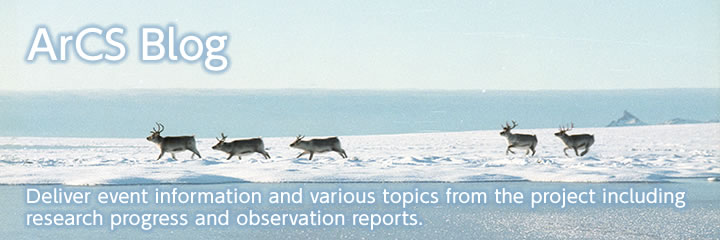The Arctic Observing Summit (AOS) 2018 was held at Davos Congress Centre in Switzerland from 24 to 26 June 2018.

I visited Sakha Republic in northeastern Siberia during July-September, 2017. The aims of my stay were 1) to conduct summer field surveys and 2) to develop future research opportunities with scientists specialized in subarctic ecosystems.
Large areas of northeastern Siberia are covered by taiga forests, which play critical roles in global carbon and nutrient cycles. High-latitude regions have experienced rapid environmental changes that can affect carbon fluxes (fixation and emissions) of the forests. I mainly focus on carbon dynamics in the soils, as soils contain a large amount of organic carbon which can be a source of greenhouse gases under projected warming. I conducted field works in taiga and taiga-tundra ecotones and collected data to estimate carbon stocks and respirations in the soils.
We conducted public relation activities during the Japan Geoscience Union (JpGU) 2018 Meeting which was held from 20th to 24th May, 2018 at Makuhari Messe, Chiba.
With financial support from ArCS’ program for overseas visits by young researchers, I visited the Scripps Institution of Oceanography (Host Researcher: Prof. Fiamma Straneo) in San Diego, USA from 29 January to 9 February, 2018. Prof. Straneo is a physical oceanographer studying high latitude oceanic processes and their role in the climate system, including ice sheet-ocean interactions. The aims of my visit to the institution are to introduce my newly developed observational system and to discuss the collected physical oceanographic data with scientists in the physical oceanography group. Within this observational system, we deployed temperature, conductivity, and pressure sensors at depths of 5 and 100 m in a fjord in Greenland. This was done by lowering the cable-attached sensors from the edge of the glacier front. The observation allows us to gain insights on how the glacier melts in the ocean interior during summer.
Second debriefing session of the program for overseas visits by young researchers was held in the Yokohama Institute in JAMSTEC on 9 May 2018.
ArCS activities consist of three categories: promotion of internationally collaborated research, enhancement of platforms for research in the Arctic, and dispatch of young researchers and specialists to Arctic research institutions and conferences. Here, promotion of research refers not only to natural science but also to social science to assess possible impacts of changes in the vulnerable Arctic environment on the world human activities and lives of people living there.
Arctic Challenge for Sustainability project (ArCS) held its third public lecture on Monday, 15th January 2018 at Hitotsubashi Hall, Tokyo. The theme of the lecture was Arctic Future and Science.
ArCS project’s 2018 plenary meeting was held at Miyoshi Memorial Auditorium and foyer, JAMSTEC Yokohama Institute for Earth Sciences on Wednesday, 9th and Thursday, 10th May 2018. The event was attended by around 100 participants.
After 4 straight days of successful samplings, today that was originally planned as a “spare day” for sampling turns out to be a free day. Curious on seeing a sunrise in Salluit at 62 degree north, I got up around 4 am hoping to capture the sunrise. To my disappointment, it was cloudy with drizzle drops accompanied by south-easterly winds, making every drop felt like freezing ice for me, a Solomon Islander. I was busy trying to pull down my jacket’s sleeve when the grasses below me moved.
Looking at the map and aerial photo of Salluit, I noticed that there is a river surrounded by rocks, streaming almost along the center of the Salluit valley. Since rock tripe lichens grow anywhere on hard substrates, preferably in the presences of water and sunlight. Such sites as the rocky river banks could harbor lichens, and I hoped to find interesting lichen flora. One way to know is to see the site; to see is to believe.




